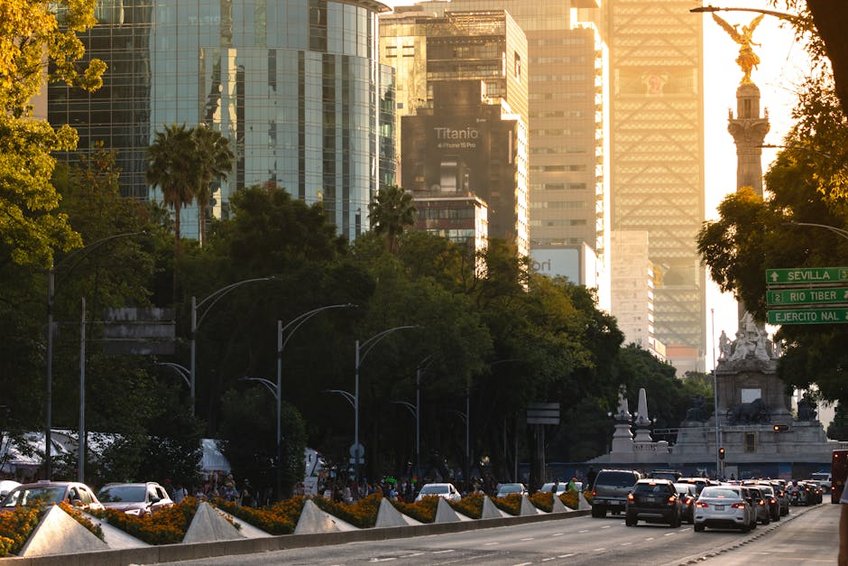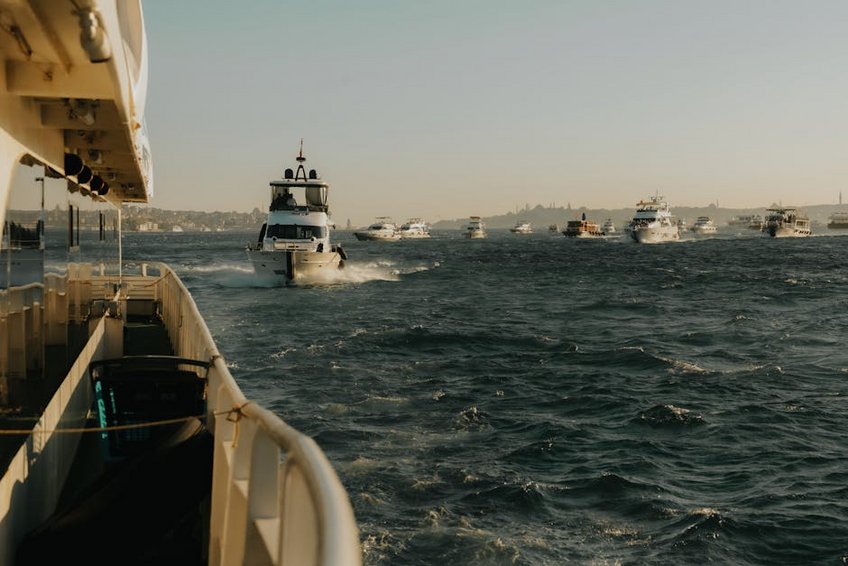Madagascar Baobab Avenue Sunset: Your Ultimate Travel Experience
Experiencing the Madagascar Baobab Avenue sunset is one of those rare travel moments that stays with you forever, transforming a simple landscape into a magical spectacle. As the sun dips below the horizon, the ancient baobab trees cast long, dramatic shadows across the red earth, creating a silhouette that photographers and nature lovers dream of capturing. This iconic scene in western Madagascar isn’t just about the visual beauty; it’s a profound connection to nature’s rhythms and the island’s unique ecosystem. You’ll find yourself surrounded by these majestic trees, some over 800 years old, standing as silent witnesses to centuries of history. The Madagascar Baobab Avenue sunset offers more than a photo opportunity—it’s a spiritual experience that reminds you of the planet’s wonders and the importance of preserving such treasures. Whether you’re a solo adventurer, a couple seeking romance, or a family creating memories, this destination delivers an unforgettable adventure that combines natural splendor with cultural richness. Planning your visit requires some insight into the best times, local customs, and practical tips, which we’ll cover to ensure your trip is as seamless and magical as the sunset itself.
Madagascar Baobab Avenue Sunset Essential Information
Understanding the basics of Madagascar Baobab Avenue sunset will help you appreciate this natural wonder even more. Located near Morondava in western Madagascar, this avenue is a collection of Grandidier’s baobabs, a species endemic to the island, lining a dirt road that stretches about 260 meters. These trees can reach up to 30 meters in height, and their bulbous trunks store water, allowing them to survive the arid climate. The area is part of a protected region, emphasizing conservation efforts to prevent deforestation. Visiting during the Madagascar Baobab Avenue sunset means you’ll witness the sky ablaze with oranges, pinks, and purples, enhanced by the stark contrast of the tree silhouettes. It’s not just a visual treat; the atmosphere is often filled with the sounds of local wildlife and the gentle rustle of leaves, adding to the immersive experience. This destination is accessible year-round, but timing your visit can make a significant difference in crowd levels and photographic conditions. Keep in mind that Madagascar’s infrastructure is developing, so patience and flexibility are key when traveling here.
What is Baobab Avenue? – A Natural Marvel
- Baobab Avenue features around 25 Grandidier’s baobab trees, some dating back centuries, forming a picturesque corridor that’s become a symbol of Madagascar’s natural heritage.
- These trees are critically endangered, with conservation programs in place to protect them from agricultural expansion and climate change impacts.
- The avenue is easily walkable, and local guides are available to share insights into the trees’ ecological role and cultural significance to the Malagasy people.
- Budget travelers can expect to spend around $30-50 USD per day, covering basic guesthouses, local meals, and shared transportation, with guided tours adding $20-40 USD.
- Mid-range options cost approximately $80-150 USD daily, including comfortable lodges, private transfers, and entrance fees to protected areas like the nearby Kirindy Forest.
- Luxury experiences range from $200-400 USD per day, featuring upscale eco-lodges, private guides for personalized Madagascar Baobab Avenue sunset tours, and gourmet dining with international cuisine.
- Madagascar National Tourism Board
- Lonely Planet Madagascar Guide
Why the Sunset is Special – Key Details
The Madagascar Baobab Avenue sunset stands out due to the unique interplay of light, landscape, and lore. As the sun sets, the low angle casts a golden glow that highlights the textures of the baobab bark, creating a photographer’s paradise. This time of day also brings cooler temperatures, making it more comfortable for exploration. Local legends say the trees were planted by giants or are upside-down, adding a mystical element to your visit. You’ll often see vendors selling handmade crafts, but the real magic lies in the quiet moments when the crowds thin, and you can soak in the serenity. This experience isn’t just about watching the sun go down; it’s about feeling a part of something timeless and connecting with a landscape that has inspired artists and travelers for generations.

Madagascar Baobab Avenue Sunset Planning Your Trip
Planning your visit to the Madagascar Baobab Avenue sunset involves considering seasons, budgets, and logistics to maximize your enjoyment. Western Madagascar has a tropical climate, with a dry season from April to October and a wet season from November to March, affecting accessibility and crowd sizes. You’ll want to book accommodations in advance, especially during peak travel months, to secure spots in nearby lodges or guesthouses. Budget-wise, this destination can be tailored to various spending levels, from backpacker-friendly options to more luxurious stays. Transportation typically involves a flight to Antananarivo, followed by a domestic flight or drive to Morondava, which can take several hours but offers scenic views of the countryside. Don’t forget to pack essentials like sunscreen, insect repellent, and a good camera to capture the stunning Madagascar Baobab Avenue sunset. Engaging with local tour operators can enhance your experience, as they provide cultural context and help navigate any language barriers.
Best Time to Visit Madagascar Baobab Avenue
The ideal time for the Madagascar Baobab Avenue sunset is during the dry season, from May to October, when skies are clear, and rainfall is minimal, ensuring unobstructed views. April and November are shoulder months with fewer tourists and pleasant weather, though occasional showers might occur. Avoid the wet season from December to March, as roads can become impassable, and humidity levels are high. If you’re a photographer, aim for early mornings or late afternoons to avoid midday heat and capture the soft light. Seasonal variations also affect wildlife sightings; for instance, lemurs are more active in cooler months. Planning around local festivals, like the Morondava Fisherman’s Festival in June, can add cultural depth to your trip, but book early to avoid price surges.
Budget Planning and Costs
Essential Preparation Checklist
Before heading to the Madagascar Baobab Avenue sunset, ensure you’re well-prepared to handle the remote location and climate. Start by checking visa requirements; most Western passport holders can obtain a visa on arrival for stays up to 30 days, but it’s wise to confirm with the Malagasy embassy. Pack lightweight, breathable clothing for daytime heat, plus a jacket for cooler evenings, and sturdy shoes for walking on uneven terrain. Health-wise, consult a doctor about vaccinations for malaria and typhoid, and carry a basic first-aid kit. Bring cash in local currency (Malagasy Ariary) or USD, as ATMs are scarce near the avenue, and credit cards aren’t widely accepted. Finally, learn a few phrases in Malagasy, like “Misaotra” (thank you), to connect with locals and enrich your cultural experience.
Madagascar Baobab Avenue Sunset Top Attractions and Activities
Beyond the iconic Madagascar Baobab Avenue sunset, the surrounding area offers a wealth of attractions that make your trip truly comprehensive. Start with a guided walk along the avenue during daylight to admire the trees’ grandeur and learn about their ecological importance from knowledgeable locals. Nearby, the Kirindy Mitea National Park is a hotspot for wildlife enthusiasts, where you might spot fossas, lemurs, and rare bird species in their natural habitat. For a unique perspective, consider a hot air balloon ride at dawn, offering aerial views of the baobabs and the sprawling landscape. Cultural activities include visiting nearby villages to witness traditional weaving or participating in a Malagasy cooking class to savor local flavors. These experiences complement the sunset, providing a well-rounded adventure that highlights Madagascar’s biodiversity and rich heritage. Remember to respect the environment by staying on marked paths and supporting eco-friendly tours.
Must-See Highlights
Your visit to the Madagascar Baobab Avenue sunset should include key highlights that define the region’s charm. The avenue itself is the centerpiece, but don’t miss the “Lover’s Baobab,” two trees intertwined, symbolizing eternal bonds—a popular spot for couples. Just a short drive away, the Sacred Baobab is revered by locals and often decorated with offerings, offering insight into spiritual practices. For adventure, take a day trip to the Tsingy de Bemaraha National Park, a UNESCO site with razor-sharp limestone formations and suspended bridges. These attractions ensure you capture the essence of western Madagascar, blending natural wonders with cultural depth. Aim to spend at least two days exploring to fully appreciate each site without rushing.
Hidden Gems and Local Favorites
Venture off the beaten path to discover hidden gems near the Madagascar Baobab Avenue sunset that many tourists overlook. The nearby fishing village of Belo-sur-Mer offers tranquil beaches where you can watch traditional pirogue boats set sail at sunrise, providing a peaceful contrast to the sunset crowds. Local guides might lead you to lesser-known baobab groves where you can enjoy solitude and better photography opportunities. For a culinary adventure, seek out small eateries serving “romazava,” a hearty meat and leafy green stew, or fresh seafood grilled over open fires. These experiences allow you to connect with the community and gain a deeper understanding of daily life in Madagascar, making your trip more personal and memorable.
Madagascar Baobab Avenue Sunset Practical Travel Information
Navigating the logistics of your Madagascar Baobab Avenue sunset trip requires attention to transportation, accommodation, and safety. Most international travelers fly into Ivato Airport in Antananarivo, then take a domestic flight to Morondava, which takes about an hour, or opt for a scenic but bumpy 8-10 hour drive. Once in Morondava, hire a 4×4 vehicle or join a tour group to reach the avenue, as roads can be rough, especially after rain. Accommodations range from basic campsites to eco-lodges, with many offering sunset viewing packages that include guided tours. Safety-wise, Madagascar is generally safe for tourists, but petty theft can occur in crowded areas, so keep valuables secure. Always travel with a reputable guide in remote regions to avoid getting lost and to enhance your understanding of the local ecosystem. Below is a table summarizing key practical details to help you plan efficiently.
| Category | Options/Features | Price Range (USD) |
|---|---|---|
| Accommodation | Guesthouses, eco-lodges, camping sites with basic amenities | $20-150 per night |
| Transportation | Domestic flights, 4×4 rentals, guided tours from Morondava | $50-200 depending on choice |
| Food & Dining | Local eateries, street food, lodge restaurants serving Malagasy and international dishes | $5-30 per meal |


